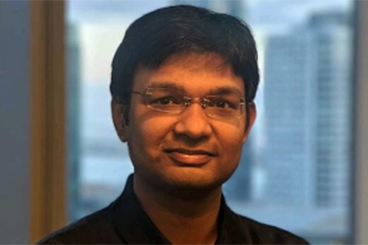Imagine founding a startup, raising $20 million, landing Disney and NASA as initial customers, then leaving Fortune 500 clients behind to concentrate exclusively on health care.
That is exactly what Abhinav Shashank and the founders of Innovaccer have done — and then earlier this year, the company joined the elite corps of health care unicorns with a $1.3 billion valuation.
Health Evolution interviewed Shashank about how building an open source platform out of curiosity ultimately led to co-founding Innovaccer, how the founders derived the company’s name, why he believes that doctors’ best friends are going to be software developers and more.
What is the origin story or inspiration driving Innovaccer?
Shashank: When we started, the founders were doing a research project with two east coast professors who wanted to collaborate between their different large institutions but the information was locked up. This was not even in health care. It was a business school-centric effort, and we realized the institutions had incredible people driving research and if they could share data that would ramp up. So, we built an “innovation activation” platform for academic institutions and researchers to share data innovation. It was an open source project. We were 23 or 24 years old and building it more out of curiosity than thinking of it as a company. Then Harvard, MIT and 65 of the top 100 research institutions started using it. As the amount of work being done on the platform and data extracted from it continued to increase and new models were being built on top of it, we realized that opening the platform up and creating liquidity increased the speed of innovation quite dramatically for the institutions that were leveraging the platform.
How did you leverage that momentum gained with the platform to continue advancing its capabilities and client or user base?
Shashank: We met a few people at JPMorgan who invested $3.5 million of seed money because every enterprise faces this challenge of data being locked in silos. Not just health care. Industries have spent years getting data into systems but not innovating to leverage that accordingly. So the platform has broad appeal. At the end of 2014 and beginning of 2015, we started building the first end-to-end cloud platform bringing together data that is accessible via our open API framework along with a software development kit to help people use it. The problem our technology is addressing is that far too often people use the data and put it in dashboards but not into workflows, so it doesn’t impact behavior that can influence business and clinical outcomes. Companies like Amazon and Uber that really use data have changed those industries quite dramatically by driving innovation with business processes. The platform was called Innovation Accelerator, which evolved into the name Innovaccer. Disney and NASA were our first customers.
You started the company, built the platform, and how did you decide to pursue clients in health care?
Shashank: We started meeting with health care organizations and it was strange to see how distributed patient information is and how doctors operate with such fragmented, limited data about their patient. Your retailer knows more about you than your doctor. So, we let go of all the Fortune 500 clients to focus solely on health care because health care data is so tightly locked up, and there’s no single view of a patient’s data. We had raised $20 million in capital in 2016 but shut all that down to create a health care cloud data platform to provide context to the entire caregiving team by unifying data into one screen— clinical and labs data, Fitbit or other tracking devices, and so on—and delivering those insights to the community of caregivers. From there, the evolution and growth have been phenomenal, 100 percent year over year. Customers including Dignity, Banner, Orlando Health are using the platform as an enterprise data fabric. The most exciting development we see happening in the health systems is the speed of innovation in care delivery, value-based care, chronic care management, and remote patient monitoring. Because they can share data, people are now able to innovate in those and other areas much more quickly than they otherwise would have.











